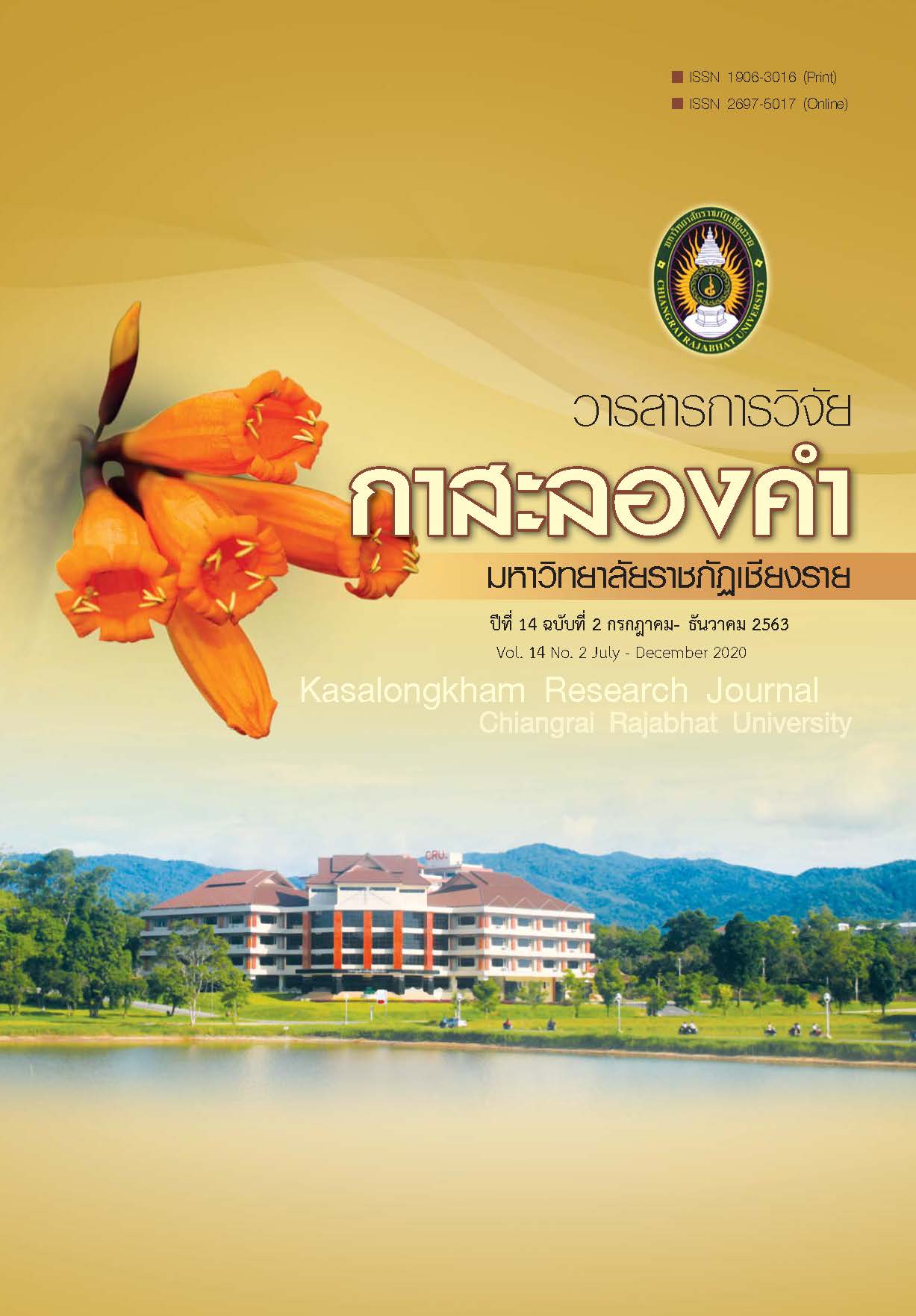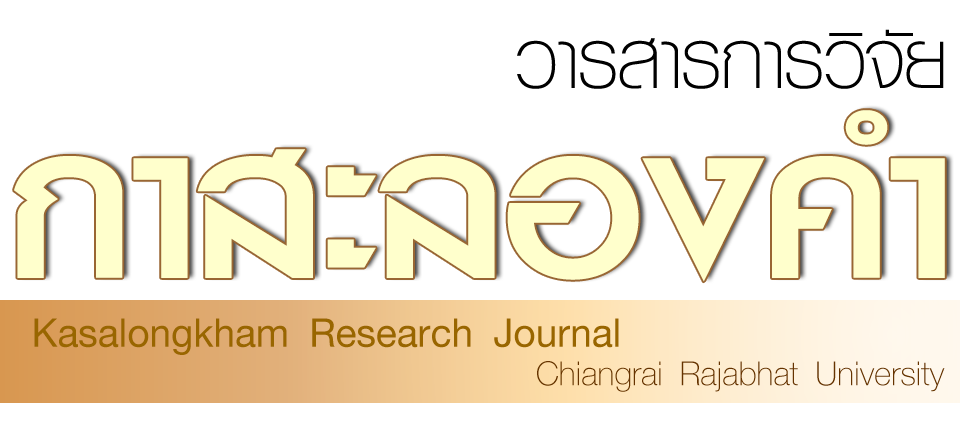Shaman King Analects: Analysing Discourse of Moral Believes in a Translated Japanese Comic Series
คำสำคัญ:
Japanese comics, Moral believes, Discourse Analysis, The Analectsบทคัดย่อ
งานวิจัยชิ้นนี้มีวัตถุประสงค์เพื่อ 1.ศึกษาคำศัพท์ที่แสดงความเชื่อทางศีลธรรมในการ์ตูนญี่ปุ่นแปลอังกฤษชุด ราชันย์แห่งภูต (Shaman King) 2.จัดกลุ่มแนวคิดทางศีลธรรมต่างๆที่พบในการ์ตูน และ 3.อธิบายแนวคิดทางศีลธรรมแต่ละกลุ่มด้วยชุดความเชื่อทางตะวันออกที่ปรากฏในสังคมญี่ปุ่น โดยใช้วิธีแบบ "วาทกรรมวิเคราะห์" ศึกษาในระดับตัวบท ระดับผู้นำเสนอสาร และระดับสังคม-วัฒนธรรม ซึ่งนำชุดความเชื่อทางศีลธรรมตะวันออกที่ปรากฏในสังคมญี่ปุ่น ได้แก่ พุทธ ชินโต ขงจื๊อ เต๋า เซน และบูชิโด มาเป็นตัวอธิบายแนวคิดที่ค้นพบจากการ์ตูนชุดนี้ จากการศึกษาพบว่ามีแนวคิด 9 หมวดหมู่ คือ บุคลิกตัวอย่าง สภาวะทางจิต การจัดการความทุกข์ สังคมสัมพันธ์ ความเป็นผู้นำ มนุษย์กับธรรมชาติ อนาคต การล้างแค้น และโทษประหาร การถอดความบทสนทนาจากการ์ตูนนั้นสังเกตได้ว่าจะทำให้เกิดตัวบทที่มีรูปแบบคล้าย "หลุนอี่ว์" ซึ่งแปลว่า "ข้อความคัดสรรเบ็ดเตล็ด" จึงมีข้อเสนอว่า วรรณกรรมประเภทเรื่องเล่าที่มีบทสนทนาทุกชนิด สามารถถูกนำมาคัดสรรให้เป็น "หลุนอี่ว์" ตามความหมายข้างต้นเพื่อวิเคราะห์ได้ทั้งสิ้น
เอกสารอ้างอิง
Bortolin, M. (2005). The dharma of star wars. Somerville, MA: Wisdom Publications.
Coyne, S., Stockdale, L., Linder, J. R., Nelson, D. A., Collier, K., Essig, L. W. (2017). Pow! boom! kablam! effects of viewing superhero programs on aggressive, prosocial, and defending behaviors in preschool children. Journal of Abnormal Child Psychology, 45(8), 1523–1535.
Dawson, A. (Ed.). (2011). Summoning the spirits: Possession and invocation in Contemporary Religion. New York: I.B.Tauris.
Fairclough, N. (1995). Critical Discourse Analysis. New York: Longman.
Fairclough, N. (2009). A dialectical-relational approach to critical discourse analysis in social research. In R. Wodak & M. Meyer (Eds.). Methods of critical discourse analysis (162-186). Thousand Oaks, California: Sage.
Fischbach, S. (2014). Ethical efficacy as a measure of training effectiveness: An application of the graphic novel method versus traditional written case study. Journal of business ethics, 128(3), 603-615.
Fronk, J. (2016). Sequential religion: The history of religion in comic books & graphic novels. New York: Fashion Institute of Technology, State University of New York.
Gerde, V. W., & Foster, R. S. (2008). X-Men ethics : Using comic books to teach business ethics. Journal of business ethics, 77(3), 245-258.
Haidt, J. (2006). The happiness hypothesis: Finding modern truth in ancient wisdom. New York: Basic Books.
Kanchanomai, P. (1997). สังคมและวัฒนธรรมญี่ปุ่น. Bangkok: Kasetsart University.
Legge, J. (1892). The four books: Confucian analects, the great learning, the doctrine of the mean, and the works on mencius. China: The Chinese Book Company.
Li, P. P. (2015). Global implications of the indigenous epistemological system from the east: How to apply Yin-Yang balancing to paradox management. Cross Cultural & Strategic Management, 23(1), 42-77.
Luo, Y., & Zheng, Q. (2016). Competing in complex cross-cultural world: Philosophical insights from Yin-Yang. Cross Cultural & Strategic Management, 23(2), 386-392.
Matsuura, D. (2010). Superman vs Goku: Different cultural values represented in superhero characters in American and Japanese comics. Laramie, Wyoming: the University of Wyoming.
McCloud, S. (1993). Understanding comics: The invisible art. New York: HarperCollins.
Paramore, K. (2016). Japanese confucianism: A cultural history. Cambridge: Cambridge University Press.
Phasukyued, P. (2015). คำนำผู้แปลและเรียบเรียง. In Osho, เต๋า: วิถีที่ไร้เส้นทาง [Tao: The Pathless Path] (6-8). Bangkok: FreeMind Publishing.
Rainey, L. D. (2010) Confucius and confucianism: The essentials. West Sussex: Wiley-Blackwell.
Satha-anan, S. (2019). หลุนอี่ว์: ขงจื่อสนทนา [Lun Yu: The Confucius Conversations]. Bangkok: OpenBooks.
Staemmler, B. (2011). Imagining spirit possession: Mixing trraditions and current trends in the Japanese manga Shaman King. In A. Dawson (Ed.), Summoning the spirits: Possession and invocation in contemporary religion (162-178). New York: I. B. Tauris.
Takei, H. (1999-2005). ราชันย์แห่งภูต [Shaman King] (เอกสิทธิ์ หนุนภักดี, Trans.) (Vols. 1-32). Bangkok: Siam Inter Comics. (1998-2004).
Takei, H. (2003-2011). Shaman King (Lillian Olsen, Trans.) (Vols. 1-32). San Francisco: VIZ Media. (1998-2004).
Thiengkrathok, P. (2009). An analysis of moral values in the adventures of tintin. Ubon Ratchathani: Ubon Ratchathani University.
Thomas, J. B. (2012). Drawing on tradition: Manga, anime, and religion in contemporary Japan. Hawaii: University of Hawaii Press.






